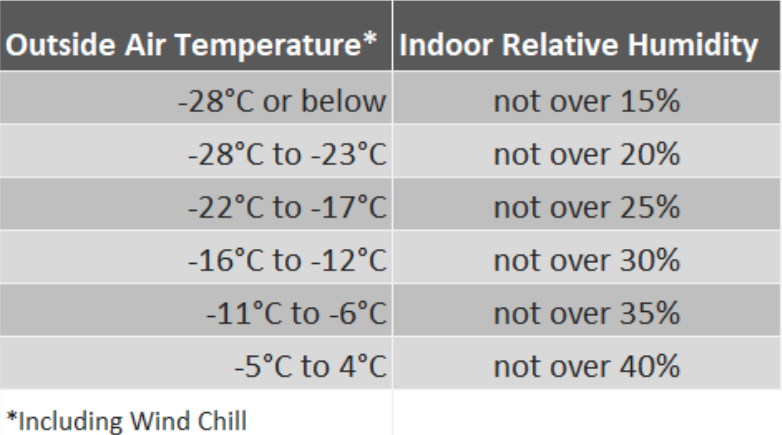Home Warranty

HUMIDITY IN YOUR HOME
HUMIDITY TOO HIGH IN THE WINTER?
• When the air is too humid in your home that increased moisture can result in stained ceilings and walls, excess attic frost, frost on the windows, doors and doorknobs, swollen hardwood floors, doors and cabinets.
• While many homeowners don’t realize it, newer, energy-efficient homes
tend to fall victim to problems of high humidity more often. Because
these homes are sealed up tight to prevent energy loss from heating
and cooling, the home also seals in a lot of moisture.
• The homeowner is responsible to manage the humidity in their home.
The Following are some basic steps to controlling the humidity in your home

CONTROLLING THE ENVIRONMENT
HRV (Heat Recovery Ventilator)
• An HRV is designed to expel stale moist air and draw in drier, fresh
conditioned air, it also provides a vital balance in air pressure.
• If your home is equipped with an HRV make sure the filters are cleaned
regularly and the unit is running properly.
• In winter climate an HRV is required to run all the time.
• Make sure your HRV is properly programmed to draw in air from
outside and operate automatically in response to the conditions in your
home. It will enter a “defrost cycle” occasionally but must return to
drawing fresh air.
• The colder the weather the more important it is that the HRV and primary fans are in operation

Ventilation Fans (Homes equipped with ventilation fans instead of an HRV)
• While there are many different configurations, the concept is the same. If your home has a ventilation fan instead of an HRV it is vital the unit be in operation especially during the winter months.
• As with the HRV, the ventilation fan provides a necessary service in the exchange of stale moist air with dry fresh air, it also provides a balance of air pressure reducing the chance that moist air is pushed into cold spaces (attic) in turn condensing and turning to frost
Kitchens & Bathrooms
• In the winter especially, it is very important you run the provided fans not only during cooking and showering but for at least 60 minutes after to help manage your homes humidity.
• Moisture in the fan vent pipes requires time to evaporate or will freeze as it enters attic space
Heat Ducts & Airflow
• Air must be allowed to flow freely around the home
• Replace furnace filters as required by the manufacturer
• Raise blinds in the morning, open the curtains
• Make sure heat vents are not covered by curtains, furniture, rugs, beds etc.
• Remove any ice build up from exhaust fans
* If you are unsure as to the operation and maintenance of your mechanical equipment, please reach out to your builder or HVAC supplier.
GETTING READY FOR SPRING CHECKLIST
[ ] Clear snow from around your foundation
[ ] Make sure your downspouts are down and clear
[ ] Make sure your window wells are free from debris
[ ] Keep your garage floor and driveway as clear as possible of snow and ice
[ ] Replace your furnace filter as per the manufacturer’s instructions
[ ] Wash your HRV filters (if applicable)
[ ] Keep snow clear from around your roof vents if possible
[ ] Make sure melting ice on roof is clear to drain to the eavestroughs and down
[ ] Open your sump pail lid and ensure the float is free and operational (if applicable)
[ ] Ensure your sump discharge is clear and directed away from your foundation (if applicable)
[ ] Make sure rain and snow melt is free to run AWAY from your home
